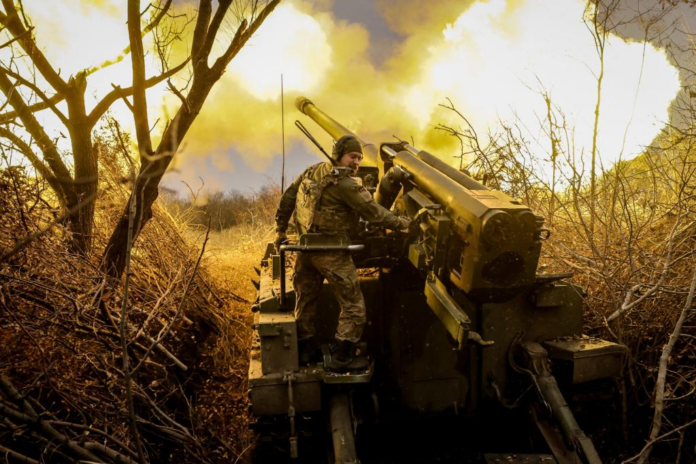If actions speak louder than words, the Biden administration’s mind-boggling throttling of military support to Ukraine last year spoke volumes.
It echoed the former president’s consistent theme: We want to support Ukraine, and more importantly be seen to be supporting Ukraine, but can’t afford to risk it winning.
President Trump has an opportunity to do things differently, to act boldly to advance the US national interest in helping Ukraine while handing Vladimir Putin and his allied autocrats a defeat on the battlefield.
Despite the Ukraine aid bill that was signed into law in April 2024, by November “just about half of the total dollar amount the US had promised in 2024 from American stockpiles had been delivered,” according to reports this week.
Ukrainian President Volodymyr Zelensky last Halloween put the number much lower, saying only 10% of the promised aid had been sent.
However you slice the numbers, the United States, by dint of bureaucracy, incompetence or deliberate slow-walking, left capabilities that Ukrainian forces could have used on the warehouse floor. Spooky indeed.
It’s clear the former administration valued “escalation management” over robust support for Ukraine, with deleterious consequences.
For instance, while Ukraine continues to face a serious shortage of armored vehicles, by December 2024, the US had delivered only 30% of the armored vehicles it had promised.
The April supplemental ultimately passed after an arduous journey through Congress; American follow-through, however, was infuriatingly halfhearted.
The new Trump administration must break the United States free of its self-imposed straitjacket of skittishness.
Trump’s recent focus on rare-earth deposits emphasizes an often overlooked facet of the war: Partnership with Ukraine presents tremendous upsides for the West, whether bolstering secure supply chains via Ukraine’s strategic minerals or working with Ukrainian defense-industry innovators.
All the more reason for Trump to clear the baffling Biden-era backlog, while also tapping into the approximately $2.25 billion in drawdown authority the Biden administration never used, to rush weapons to Ukraine and put pressure on the Russians.
This effort would not require passing a new funding bill.
It would simply entail kicking the Defense Department into high gear and efficiently sending Ukraine the military support that Congress has already authorized.
Trump may want to end the war quickly, but as it stands, Putin simply has no intention of cooperating with a US-designated timeline.
Getting Russia to the negotiating table, to say nothing of crafting a resolution that constrains rather than catalyzes the Kremlin’s continued imperial ambitions, will be a tall order — perhaps even an impossible one.
Start and end your day informed with our newsletters Morning Report and Evening Update: Your source for today’s top stories Thanks for signing up! Enter your email address Please provide a valid email address. By clicking above you agree to the Terms of Use and Privacy Policy. Never miss a story. Check out more newsletters
For the West to succeed, it needs to force Putin to conclude that Western resources will outlast his own — and that the risks of hanging on far outweigh the possible rewards.
“We know who the aggressor is. We know who the good guy is,” Defense Secretary Pete Hegseth said of Ukraine in his Senate confirmation hearing.
“We’d like to see it as advantageous for the Ukrainians as possible. But that war needs to come to an end.”
Most Americans would agree with Hegseth on the moral distinctions between the warring sides, the need to help Ukraine enter negotiations from a position of strength, and the desire to stop the bloodshed.
The best way to get to that point is to wholeheartedly support Ukraine in a way that the last administration, for all its rhetoric and spending, was incapable of accomplishing.
Trump must end the self-defeating restrictions on Ukraine’s use of American weapons systems and halt the calibrated parsing of military aid: The United States is trying to help an ally defeat an adversary as quickly and effectively as possible, not doling out an allowance to a child.
In doing so, Trump would be making a clear distinction between his policies and those of his predecessor, who gave Ukraine just enough aid not to lose — but never enough to ensure that Russia fails.
It would also send an unambiguous signal to Putin that Trump’s administration means business.
Moscow is drawing its own conclusions as it sees approved lethal support languishing on the lee side of the Atlantic.
The onus and opportunity are with the new team in Washington to shake up the current stalemate, one weapons system delivery at a time.
Daniel Kochis is a senior fellow at the Center on Europe and Eurasia at Hudson Institute.



